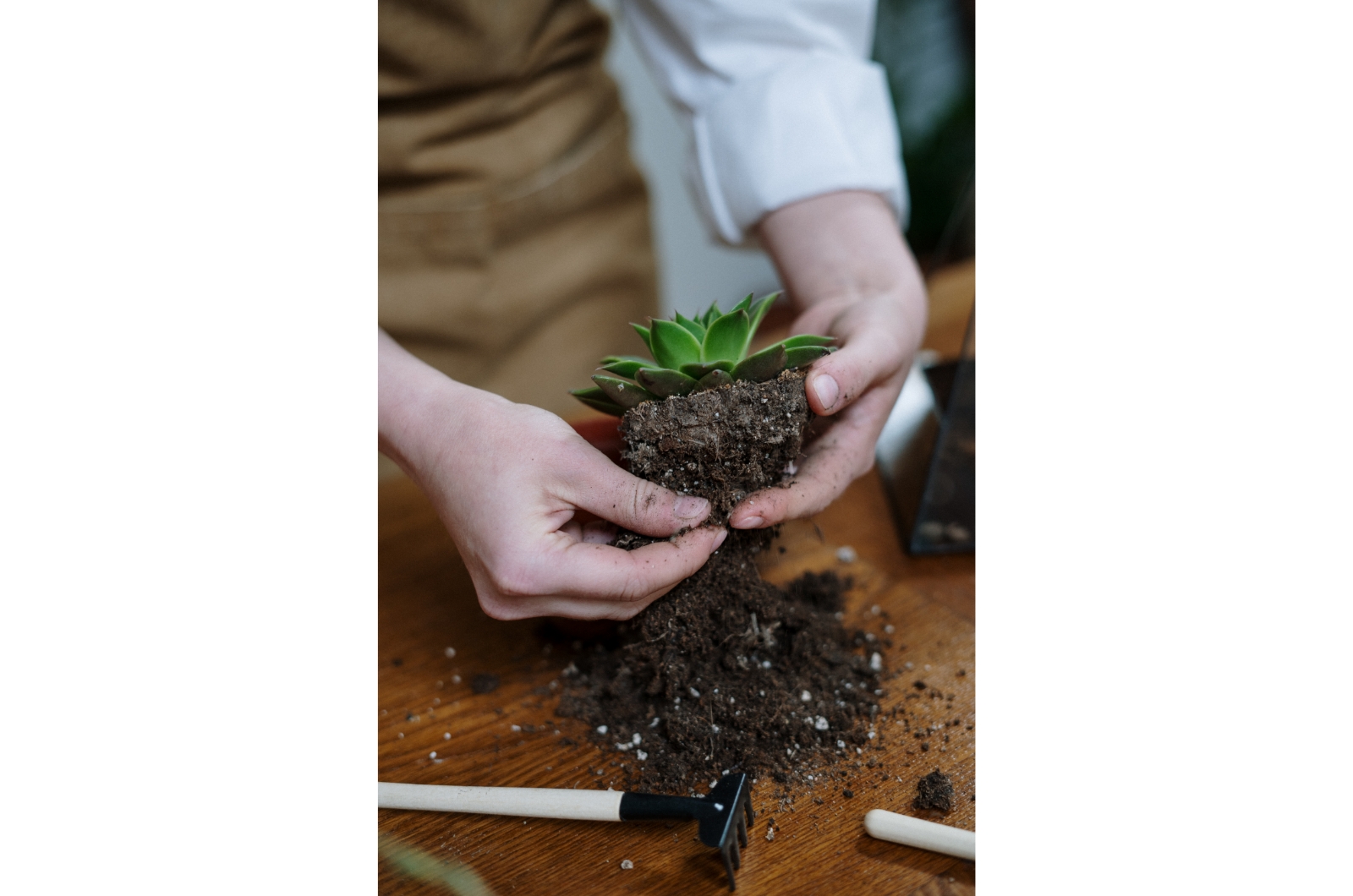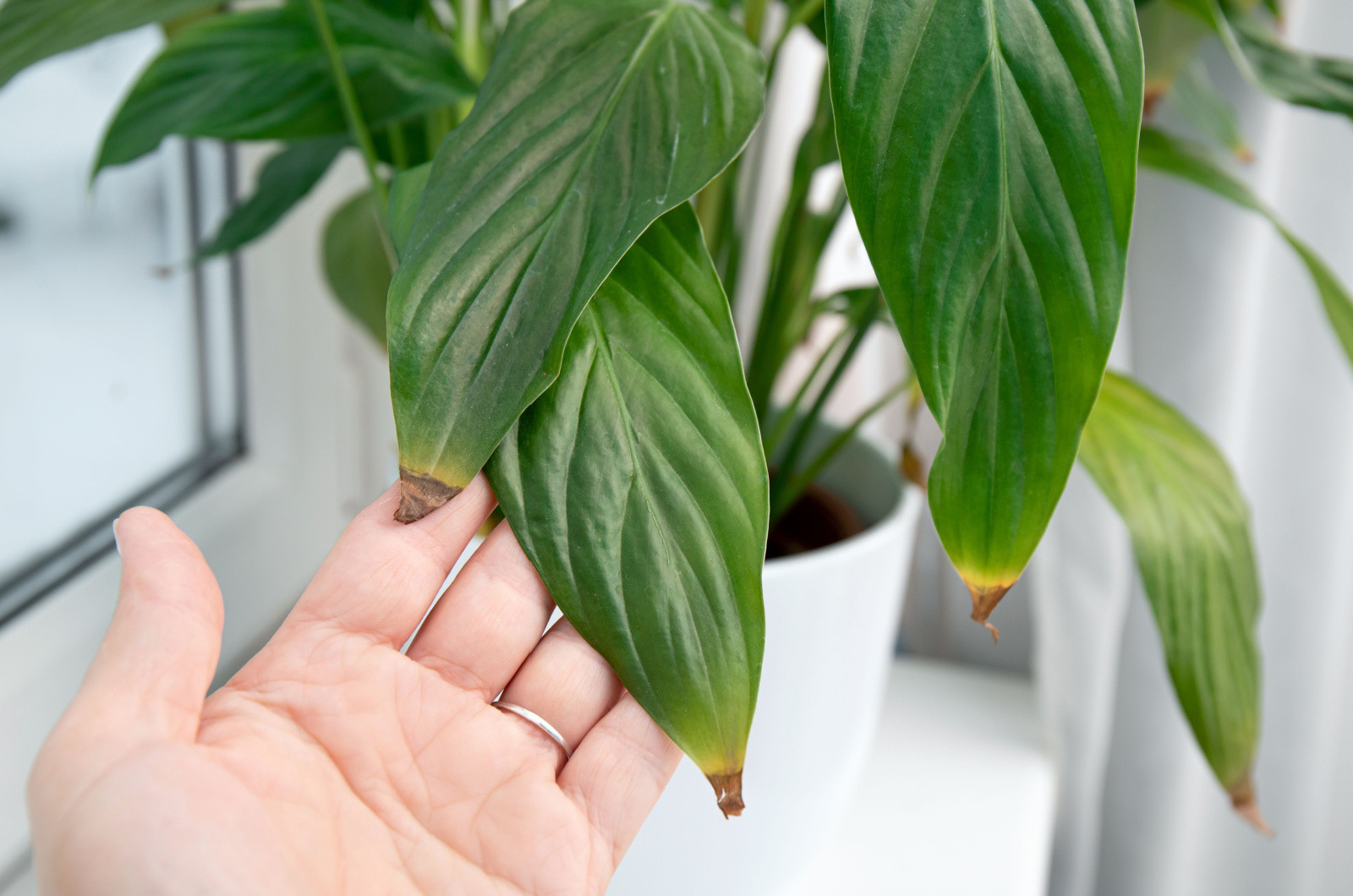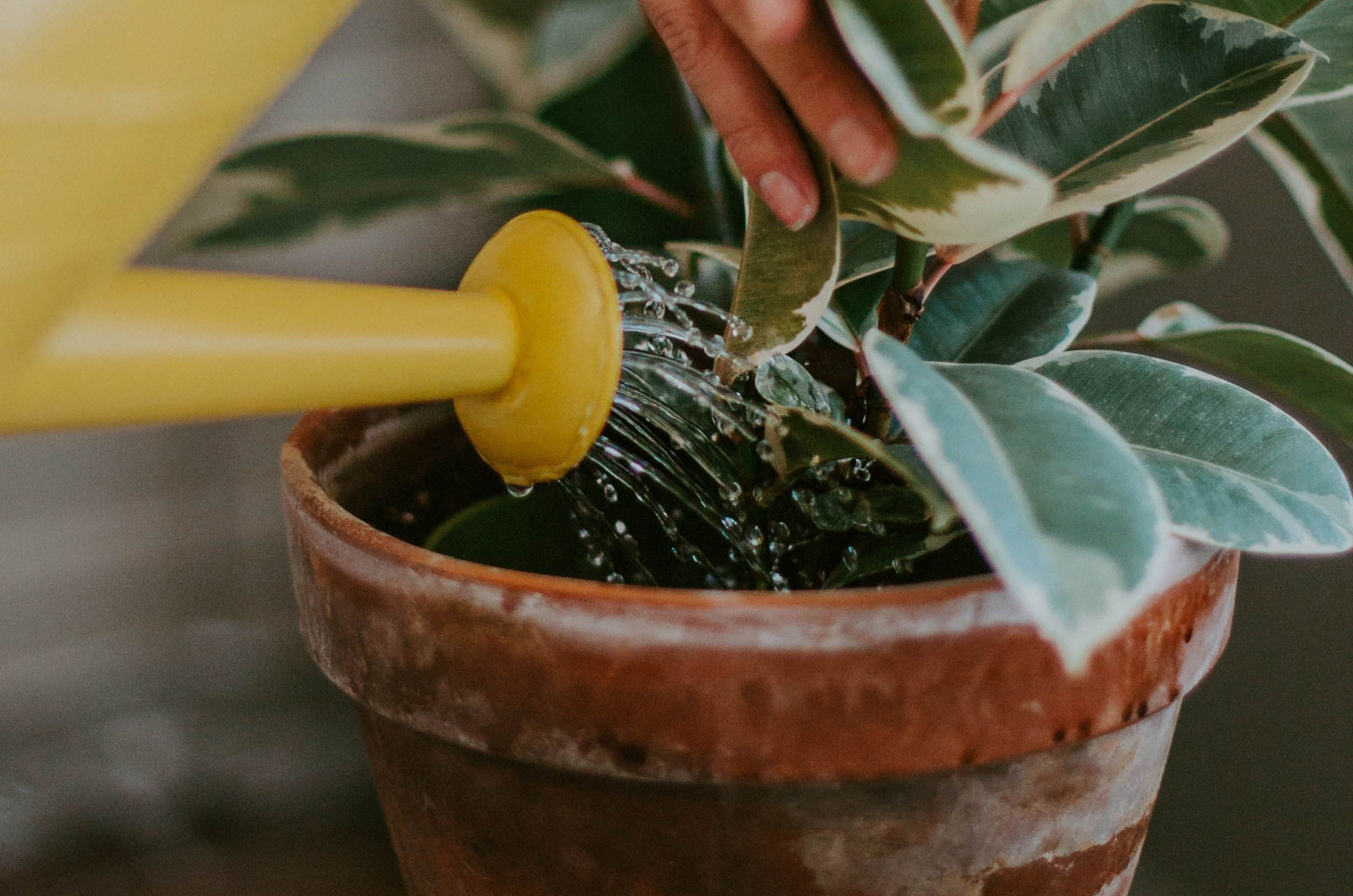One of the things I’ve learned over the years while maintaining my green buddies is that they can tell you every time something bothers them. Of course, not in the way we communicate, but rather by displaying different changes in their appearance when the conditions are wrong.
It took me a lot of time to figure out that the soil, light, and temperature aren’t the only conditions that can affect your plant.
Salts can build up in the growing substrate, which will lead to various consequences. The only solution to this problem is a method commonly referred to as houseplant leaching.
In this article, I’ll show you how to recognize that your plants need leaching and the easiest way to do it!
Let’s get started!
How Do Soluble Salts Reach Houseplants?
The first question that needs to be answered is how the salts reach our houseplants. These substances are referred to as minerals and they’re found in water. (1)
The naturally occurring minerals include boron, calcium, sodium, magnesium, and chloride. I also have to mention that the process of dissolving fertilizer in water results in its transformation into a soluble salt.
To put it simply, the salts build up in the growing substrate after we water our plants. If you live in areas with hard water, your soil is more susceptible to salts.
You should know that a small amount of salt isn’t bad for plants and is actually necessary for healthy development. But once their concentration increases significantly, it will affect your prized plants.
It will cause a lot of damage to the plant roots and they’ll be sensitive to dehydration even after we irrigate our plants.
Now let’s see how to recognize this condition.
Signs Your Houseplants Need Leaching
The first and most evident sign your soil contains too much salt is burned tips of the plant leaves.
The tips are most likely to suffer first because that’s where water travels last. If your plant has issues with water absorption, the leaf tips won’t be hydrated and will display browning.
This condition is easily identified in plants with pointy leaves; for instance, brown parlor palm leaf tips are easier to recognize than monsteras.
The good news is that this problem isn’t hard to solve if caught early enough. All you need to do is either leach or repot the plant and remove the tips.
If you notice salts on the plant container or in the soil, that’s another sign your plants need leaching.
You’ll easily recognize this in unglazed terracotta pots because this is a porous material and the salts can get through the container walls.
If you’re using glazed pottery, you may have trouble identifying this issue because the salts can’t go through the walls. In this case, you’ll need to observe the top of the pot.
Sometimes you’ll notice the salts on the stems of your plants, especially if you don’t address the issue on time.
How To Leach Houseplants
Luckily, leaching houseplants isn’t a complicated method and you don’t need to be a master gardener to complete it successfully.
The first step is to remove any layer of salt you can see. The next thing you need to do is irrigate your plant thoroughly and allow it to drain well.
Ensure there’s sufficient water pressure, striking a balance between a gentle flow and avoiding the risk of soil being blown out of the container.
You can stop watering when you notice the water is running through the drainage holes in the bottom of the pot and then leave your plant to drain well.
After approximately 10 minutes, repeat the process following the same steps. The first round of watering is intended to dissolve salts, and the second round is aimed at flushing them out of the soil.
How Often To Leach Houseplants
Including this chore on your typical plant care regime may not be a priority. Honestly, I do it whenever I notice any of the signs I described above.
Two to three times a year is a good timeframe to follow, unless the signs occur sooner.
Avoiding salt build up in the growing substrate is pretty hard unless you use only rainwater for your plants or you skip feeding them entirely.
However, we can decrease the rate of soil accumulation by following the correct fertilizing schedule and changing the watering technique.
If you’re using synthetic fertilizers, make sure to apply them according to the plant’s needs and at the recommended dosage. I highly recommend using organic fertilizers such as fish emulsion or seaweed-based fertilizers.
Instead of watering your plants frequently and lightly, opt for deep watering when the soil dries up a little bit.
Simply water your houseplant until you see water running through the drainage holes and make sure to empty the saucer approximately an hour later.
If you leach your houseplants regularly but there aren’t signs of improvement, you should repot them. This will give your green buddies a fresh start!
References
1. Basics of Salinity and Sodicity Effects on Soil Physical Properties – MSU Extension Water Quality | Montana State University. (n.d.).




